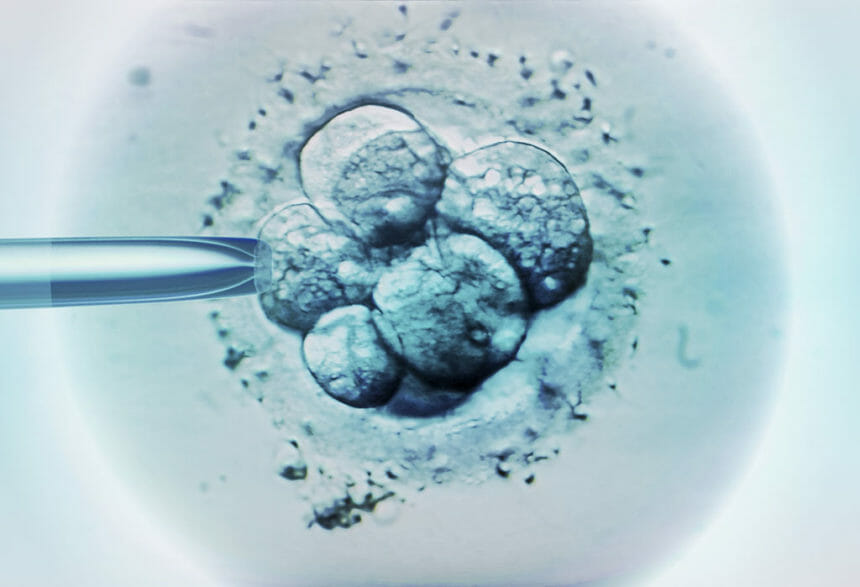Since the Supreme Court struck down Roe v. Wade, medical and legal experts have busied themselves examining how state abortion bans or trigger laws may have ripple effects on healthcare beyond direct abortions. One of those overlooked but adjacent areas is in vitro fertilization (IVF), the series of procedures used to help people conceive a child by retrieving eggs from a woman’s ovaries and fertilizing them in a lab.
A recent American Society for Reproductive Medicine (ASRM) report outlined state abortion trigger laws in the aftermath of the Supreme Court decision and how they might restrict reproductive care. Although no legislation explicitly restricted or banned certain IVF procedures, there’s a grey area around some of the implications of the language used in anti-abortion laws.
“The impact of these laws will vary state-by-state and often hinge on things such as how terms like ‘fertilization’ and ‘unborn child’ are defined and used,” the authors wrote. “For example, in some states, the law defines life as beginning at any point after fertilization. This has potential implications for those practicing IVF.”
According to Dr. Arthur Caplan, head of medical ethics at NYU Grossman School of Medicine, there are three main ways IVF could be impacted by such laws. The first is the language around conception — and whether an embryo is considered a person.
In IVF, the goal is to develop as many healthy embryos as possible to ensure a successful pregnancy. This over-production of embryos is important to create a higher probability of implanting healthy ones, boosting the likelihood of having a child.
Once some of those embryos are implanted, the others are left behind. Individuals can choose to freeze or discard them. “But in states that don’t allow abortion, they might say you can’t destroy embryos,” Caplan warned.
If such a policy were introduced and enforced, it could lead to doctors making a more limited number of embryos to implant — which could greatly reduce the chance of having a baby via IVF.
The second way IVF could be impacted has to do with destroying embryos that may have markers for severe genetic diseases. Currently embryos are screened to make sure they’re not at risk of developing certain diseases. Those at risk are typically discarded to make room for healthier ones.
“That would be imperiled if people say you can’t destroy embryos that have defects,” Caplan noted.
Meanwhile, among women who experience multiple pregnancies as a result of IVF, some choose to abort one — or several — to protect the mother’s health.
“Allowing multiple pregnancies could risk the health of the mother. For some women, the womb can support no more than three babies at a time, for example,” Caplan explained.
The fourth area where such laws may have an impact, though these cases are more rare, are uterine transplants. If there’s an embryo in a uterus when it needs to be taken out, it could technically be considered an abortion.
In the future, such laws “could have a big impact on IVF and reproductive tech,” Caplan explained. “It’s ironic because IVF is more of a pro-life creation community. What they’re doing is trying to make babies.”
Most anti-abortion advocates note there’s no real interest in creating laws that would restrict IVF. Their focus is primarily on women already pregnant, rather than embryos developed in a lab.
But in the last year, Republican lawmakers in around 10 states have proposed bills that would give frozen embryos legal “personhood” status, according to The New York Times. Those laws haven’t passed — but fueled by the Supreme Court’s ruling in Roe v. Wade, other anti-abortion advocates have begun to considering pushing “personhood” laws even further.
Caplan, meanwhile, believes that most people in the IVF industry will continue operating as normal.
“They’ll keep doing what they’re doing and hoping nobody notices,” he said. “In the world of IVF, you’re working with people who want to have children. It’s very pro-life. The chance of people ratting you out or blowing the whistle to a prosecutor is much lower.”







